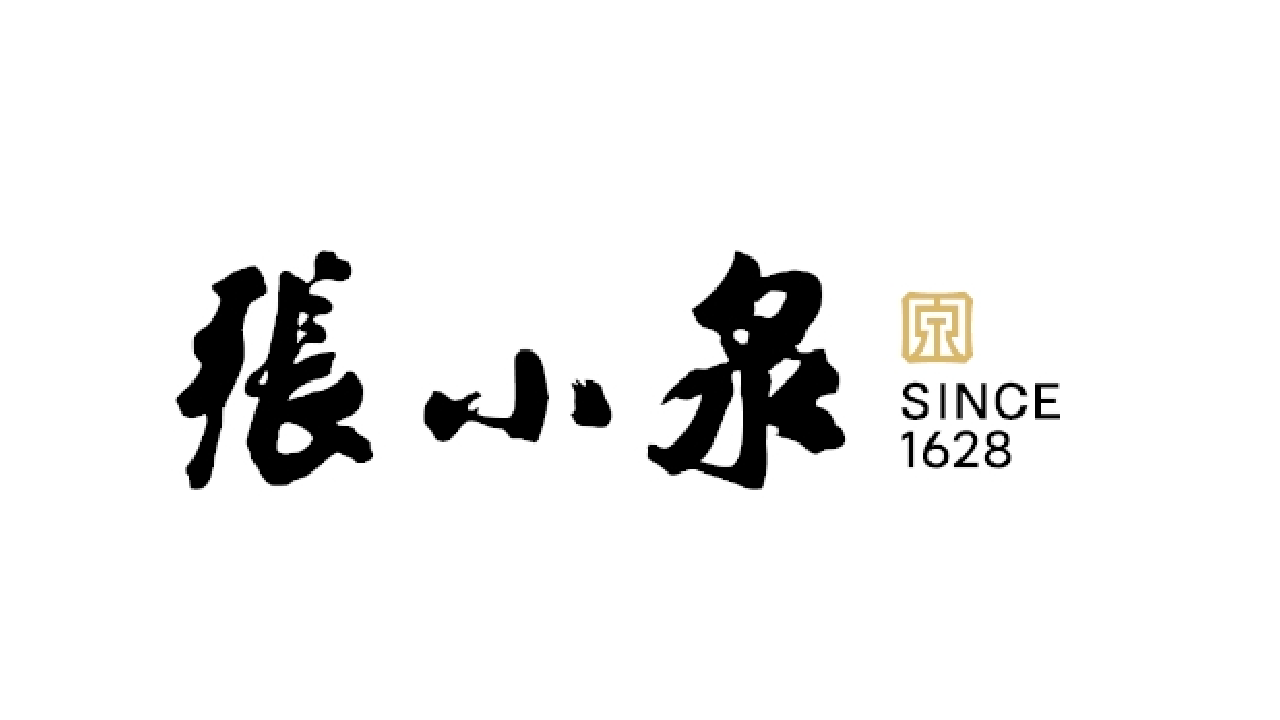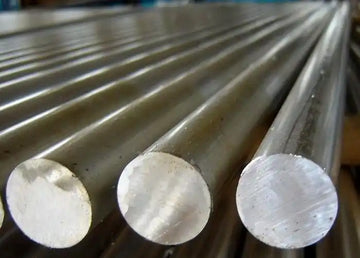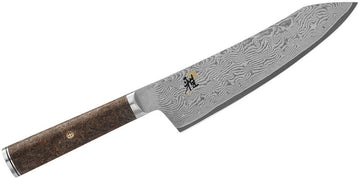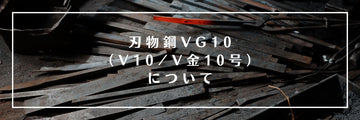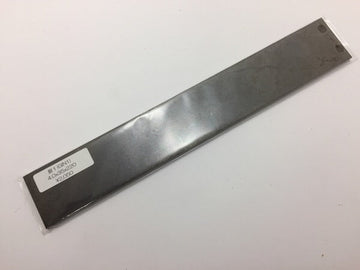When you pick up a kitchen knife made in Germany, chances are it's made of X55CrMoV14 steel(EN 1.4110). This special metal was created to solve a simple problem: how to make knives that don't rust easily but still stay sharp enough for everyday cooking. While it might not be as famous as some other knife steels, X55CrMoV14 has quietly become the backbone of many European kitchen knives that home cooks and chefs rely on daily.
Where X55CrMoV14 Steel Came From
Germany has been making quality knives for centuries. Back in the late 20th century, knife makers were looking for a steel that wouldn't rust like traditional carbon steel but could still take a good edge. X55CrMoV14 was their answer. Companies like Victorinox (the ones who make Swiss Army knives) and Zwilling J.A. Henckels started using this steel for their kitchen knives, and many cooks came to appreciate its practical qualities.
What Makes X55CrMoV14 Steel Special?
The name X55CrMoV14 might look like a secret code, but it actually tells you what's in the steel:
The "55" tells you there's about 0.55% carbon, which helps the knife stay sharp.
"Cr" means chromium, and there's 13-15% of it in there to fight off rust.
"Mo" stands for molybdenum, which helps the knife resist pitting when cutting salty foods.
"V" is for vanadium, a little bit of which keeps the steel's structure fine and strong.
The "14" just indicates about 14% chromium content.
It's a bit like a recipe – all these ingredients come together to create a steel with a good balance of qualities for kitchen knives.
How X55CrMoV14 Steel Performs in Your Kitchen
Sharpness and Edge Holding
When properly heat-treated, X55CrMoV14 reaches a hardness of 54-58 on the Rockwell scale (that's the HRC number you might see in knife descriptions). This is softer than Japanese knives but has a good reason – it makes the knife less likely to chip if you accidentally hit a bone or drop it.
The steel holds an edge well enough for most cooking tasks, though you'll need to sharpen it more often than premium Japanese knives. The trade-off is that when you do need to sharpen it, it's pretty easy to do, even for beginners.
Rust Resistance
Thanks to its healthy dose of chromium, X55CrMoV14 stands up well to moisture in the kitchen. You can cut acidic foods like tomatoes or citrus without worrying about immediate staining or rust. Of course, no knife likes to sit in water, but this steel is forgiving if you occasionally forget to dry it right away.

Toughness and Durability
One of X55CrMoV14's best qualities is its toughness. The steel can handle lateral pressure when you're deboning meat or chopping through tougher vegetables. It won't bend permanently during normal kitchen use, and it can take some abuse without chipping or breaking.

Think of it as the dependable work truck of kitchen knife steels – not the fanciest or fastest, but reliable day in and day out.
How to Use X55CrMoV14: Make These Knives
The Heating and Cooling Dance
Making a good knife from X55CrMoV14 involves several careful steps of heating and cooling:
First, they heat the steel to nearly 1000°C, hot enough to reorganize its internal structure.
Then they cool it quickly in oil to harden it.
Some fancy manufacturers like Zwilling even cool the steel to super-cold temperatures (around -70°C) to make it more stable.
Finally, they heat it again at lower temperatures (around 200°C) to reduce stress while keeping the hardness.
This process is a bit like baking bread – the time and temperature have to be just right to get good results.
Shaping and Finishing
Once the steel is properly treated, it's shaped into a knife through grinding and polishing. They use increasingly fine abrasives to create the edge, similar to how you might sand a piece of wood with progressively finer sandpaper. Many manufacturers add final touches like laser etching for the brand name and special polishing to help food slide off the blade more easily.

How X55CrMoV14 Compares to Other Knife Steels
X55CrMoV14 and X50CrMoV15
X55CrMoV14 and X50CrMoV15 are like brothers – very similar but with small differences. X55CrMoV14 has a touch more carbon, making it slightly harder. You probably wouldn't notice the difference just holding them, but after extended use, you might find that X55CrMoV14 keeps its edge about 15% longer.
On the flip side, X50CrMoV15 is a bit tougher and less likely to break when bent, which is why many flexible boning knives use this steel. Price-wise, they cost about the same, so your choice often depends on how you use your knife. People who like precise cutting might prefer X55CrMoV14, while those with a rougher cooking style might appreciate X50CrMoV15's durability.
X55CrMoV14 and VG-10
Comparing X55CrMoV14 to VG-10 is a bit like comparing a family sedan to a sports car. VG-10 is a premium Japanese steel that can reach a hardness of 60-62 HRC, while X55CrMoV14 usually sits at 54-58 HRC. This hardness difference means VG-10 knives stay sharp longer and feel more razor-like when cutting.
But just as sports cars aren't ideal for all roads, VG-10 has its downsides. It's more prone to chipping, especially if you accidentally hit a bone or press too hard on a cutting board. VG-10 knives also cost significantly more, typically 30-50% higher than X55CrMoV14 knives. If you're new to cooking or don't want to spend much time maintaining your knives, X55CrMoV14 might be more your speed since it's easier to care for and more forgiving of little accidents.
X55CrMoV14 and 5Cr15MoV
Think about the difference between a name brand and a budget brand – that's the relationship between X55CrMoV14 and 5Cr15MoV. The latter is a common Chinese steel that costs less to produce, making knives using it much more affordable, sometimes half the price of X55CrMoV14 knives.
X55CrMoV14 has slightly more carbon and more consistent heat treatment, giving better hardness and cutting performance. In real-world use, an X55CrMoV14 knife might stay sharp 25-30% longer. But don't write off 5Cr15MoV – for occasional cooks or those on a budget, it offers good value. Both steels are relatively easy to sharpen, so even kitchen novices can maintain them without special equipment.
X55CrMoV14 and AUS-8
AUS-8 is a popular Japanese steel that takes a different approach than X55CrMoV14. It can reach higher hardness levels (58-60 HRC), which helps the edge stay sharp longer. If you enjoy doing precise knife work, like slicing sashimi, you might prefer how AUS-8 performs.
On the other hand, X55CrMoV14 handles acidic foods better, meaning it's less likely to corrode when cutting citrus fruits or tomatoes. Interestingly, AUS-8 is more common in Japanese-style knives and pocket knives, while X55CrMoV14 dominates European kitchen knives. They cost about the same, but they feel quite different in use – AUS-8 gives a sense of precision and sharpness, while X55CrMoV14 feels solid and dependable.
X55CrMoV14 and AUS-10
If AUS-8 is Japan's mid-range steel, AUS-10 is the upgrade. It contains more carbon (0.95-1.10%), making it harder than X55CrMoV14 and better at cutting. Using an AUS-10 knife, you might feel it almost finds the cutting line by itself, and it stays sharp after multiple uses.
This advantage comes with trade-offs, though. X55CrMoV14 is more rugged and less likely to chip when hitting bones or frozen foods. Price-wise, AUS-10 knives usually cost 15-25% more, but many cooking enthusiasts find the difference worthwhile. These two steels reflect different cooking philosophies: X55CrMoV14 suits heavier Western-style chef's knives, while AUS-10 often appears in thinner, sharper Japanese blades.
Common Problems and Simple Solutions
Like any steel, X55CrMoV14 sometimes has issues in manufacturing:
Sometimes the chromium forms uneven lines in the blade, creating potential weak spots. Better manufacturers solve this by controlling the cooling rate very precisely.
The hardness can be inconsistent across the blade if the temperature varies too much during tempering. Good knife makers use strict temperature controls (within 2°C) to prevent this problem.

What's Coming in the Future
Knife makers are always trying to improve steel, and X55CrMoV14 is getting some interesting upgrades:
Some are creating extremely tiny carbides (50-100 nanometers) through a process called plasma nitriding, which can boost hardness to 60 HRC without making the knife brittle.

Others are using 3D printing methods to create complex blade shapes with less waste.
Some are even applying super-thin graphene-oxide coatings that make food slide off the blade better, especially when cutting meat.

The Bottom Line
X55CrMoV14 isn't the fanciest or most expensive steel out there, but it hits a sweet spot for kitchen knives. It balances rust resistance, edge holding, and affordability in a way that works for most home cooks and professional kitchens. It's perfect for people who want reliable knives that don't need special care.
Think of it as the trusty kitchen workhorse – not the showiest tool in the drawer, but one you can count on day after day. As manufacturing keeps improving, X55CrMoV14 knives will likely get even better, ensuring they'll remain popular in European-style kitchens for years to come.
FAQs
What is 1.4110 steel?
1.4110 steel is the European numerical designation for X55CrMo14 stainless steel. It contains about 0.55% carbon and 14% chromium, along with some molybdenum. This steel is commonly used in kitchen knives, especially from German manufacturers, because it offers a good balance of corrosion resistance, edge retention, and toughness. It's relatively easy to sharpen and performs well in most kitchen environments.
Is X55CrMo14 of good quality?
Yes, X55CrMo14 is good quality steel for kitchen knives. It's a reliable stainless steel used by respected manufacturers like Victorinox and many European knife makers. With about 0.55% carbon and 14% chromium, it offers excellent corrosion resistance and good edge retention for general kitchen tasks. While not as hard as premium Japanese steels, it's more forgiving, less likely to chip, and easier to maintain, making it ideal for both home cooks and professional chefs who want dependable, low-maintenance knives.
What is 1.4110 steel equivalent to?
1.4110 steel (X55CrMo14) is roughly equivalent to American 440A stainless steel, though with some differences. In Japanese standards, it's somewhat similar to AUS-6, though not identical. The closest direct comparison is probably with German X50CrMoV15 (1.4116), though X55CrMo14 contains slightly more carbon and less vanadium. All these steels occupy a similar position as mid-range stainless knife steels that balance hardness, corrosion resistance, and ease of maintenance.
Is X55CrMo14 a good knife steel?
Yes, X55CrMo14 is a good knife steel for everyday kitchen use. It hits a sweet spot between performance and practicality. With a hardness of 55-57 HRC, it holds an edge well enough for most cooking tasks while being tough enough to resist chipping. Its 14% chromium content provides excellent rust resistance, making it forgiving if you occasionally leave it wet. It's also relatively easy to sharpen. While premium steels may outperform it in edge retention, X55CrMo14 offers reliability and reasonable performance at an accessible price point.
What is the difference between X50CrMoV15 and X55CrMo14?
The main differences between X50CrMoV15 and X55CrMo14 are their carbon content and alloying elements. X55CrMo14 has slightly more carbon (0.55% vs 0.50%), making it a bit harder (56 HRC vs 54 HRC) with better edge retention. X50CrMoV15 contains vanadium (the "V" in its name), which X55CrMo14 lacks, giving it better grain refinement. X50CrMoV15 also has a touch more chromium (15% vs 14%). The result: X55CrMo14 holds its edge slightly longer, while X50CrMoV15 has marginally better corrosion resistance and is slightly tougher.
AISI 440C Stainless Steel vs. X55CrMo14(EN 1.4110) Stainless Steel
440C stainless steel contains more carbon (1.0%) than X55CrMo14 (0.55%), allowing it to reach higher hardness (58-60 HRC vs. 55-57 HRC). This gives 440C better edge retention, while X55CrMo14 offers better toughness and is less likely to chip. Both have similar chromium content (16-18% for 440C, 14% for X55CrMo14), but X55CrMo14 contains molybdenum for improved corrosion resistance in acidic environments. X55CrMo14 is easier to sharpen, while 440C can take a finer edge. X55CrMo14 is more common in kitchen knives, while 440C appears more in hunting and tactical knives.
Can X55CrMo14 rust?
Yes, X55CrMo14 can rust, though it's highly resistant to corrosion. While its 14% chromium content classifies it as stainless steel, no steel is completely "stainless." If exposed to harsh conditions like saltwater, strong acids, or prolonged moisture, X55CrMo14 can eventually develop rust spots. To prevent this, simply wash and dry your knife after use, especially after cutting acidic foods like citrus or tomatoes. With basic care, an X55CrMo14 knife will remain rust-free for many years of regular kitchen use.
How hard is X55CrMo14 steel?
X55CrMo14 steel typically reaches a hardness of 55-57 HRC (Rockwell C scale) after proper heat treatment. This hardness level strikes a good balance for kitchen knives - hard enough to maintain a sharp edge during food preparation, but not so hard that it becomes brittle or difficult to sharpen. By comparison, softer steels (50-53 HRC) are easier to sharpen but lose their edge faster, while harder steels (60+ HRC) stay sharp longer but are more prone to chipping and more challenging to resharpen.
Is X55CrMo14 good for chef knives?
Yes, X55CrMo14 is very well-suited for chef knives. Its balanced properties make it particularly good for the all-purpose cutting, chopping, and slicing that chef knives handle. With a hardness of 55-57 HRC, it holds an edge well through meal preparations while being tough enough to handle occasional contact with bones or harder ingredients. It's also relatively easy to sharpen when needed. The steel's good corrosion resistance means it can handle acidic foods without immediate care. These characteristics make X55CrMo14 chef knives reliable workhorses in both home and professional kitchens.
How to sharpen X55CrMo14 steel?
Sharpening X55CrMo14 steel is straightforward with common sharpening tools. Start with a medium grit whetstone (1000-1200 grit) to establish the edge. Maintain a consistent angle (typically 15-20 degrees per side for kitchen knives) and use light pressure. Once the edge is established, progress to a finer stone (3000-6000 grit) for polishing. X55CrMo14 responds well to both whetstones and pull-through sharpeners, though whetstones give better results. Honing with a ceramic or steel rod between sharpenings helps maintain the edge. The moderate hardness of X55CrMo14 makes it easier to sharpen than harder steels like VG-10 or ZDP-189.
